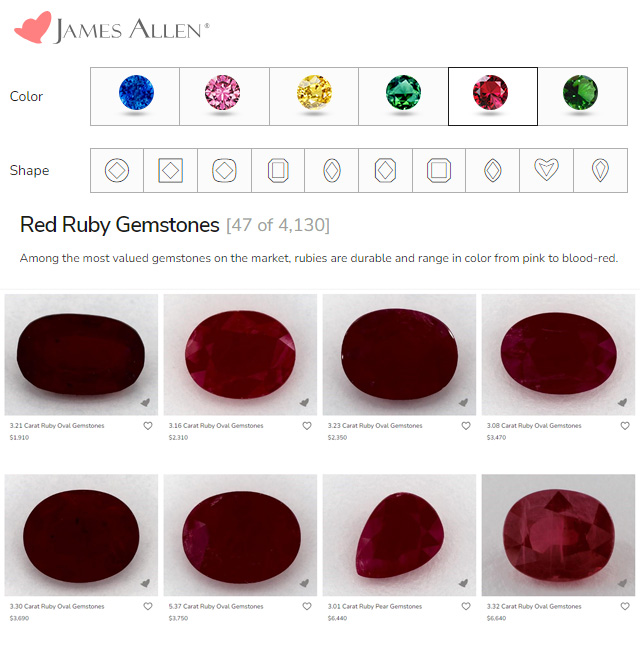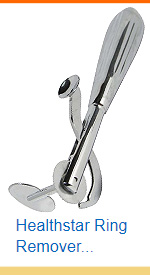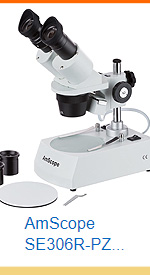WHY ARE NATURAL RUBIES SO HARD TO FIND?
THE PRICE OF NATURAL RUBIES AND ALTERNATIVE RED RUBY LOOKALIKES
This post contains affiliate links. If you use these links to buy something I may earn a commission. Thanks! As an Amazon Associate I also earn from qualifying purchases.

Ruby is July’s birthstone…
So why is it so hard to find a real one?
Literally almost all of the rubies you see in jewelry stores today are NOT THE REAL GEMSTONE!
Meaning, almost all of them are lab-grown. This has been going on since the early 80’s (and even long before that, but the 80’s is when it became very popular due to the mall jewelry store chains). All the red stones are created in a laboratory. The good thing about that is the fact that they are ultra-clean inside (unlike a real ruby). But, they look too clean. Perfect even. Which is a dead giveaway that they are not the real deal.
So why the big change to created stones when real rubies still exist?
It all comes down to rarity and price
Finding a real nice ruby is difficult. Most are too light in hue (they’ll look pink instead), or too dark (looking black with no life). Most are not jewelry worthy. And the means to obtain them through mining and ethical reasons, has made the ruby industry shift into alternative lookalikes.
Take for example this real natural ruby below…
It’s a stunning 4 carat red ruby…
Natural ruby at James Allen here.
Did you see that price?
$76,930
So tell me, for an almost perfect certified gemstone, are you willing to pay that much? Maybe… probably not.
And that’s me picking out a nice looking stone (looking at 3 carats and bigger). Which wasn’t easy to do. Most are not that pretty…
Take a look at the vast selection of natural rubies at James Allen here…
You can get 3 carats as low as $2,000. And many people will spend that. But often huge purchases are geared towards diamond rings instead. Expensive rubies can sit around in inventory for years.
So what really makes them so expensive?
Natural rubies are expensive due to several factors:
- Rarity: Natural rubies are relatively rare gemstones. They are formed deep within the Earth’s crust under specific geological conditions involving intense heat and pressure. The scarcity of high-quality natural rubies contributes to their high price.
- Color: Rubies are valued for their vibrant red color. The most desirable rubies exhibit a deep, vivid red hue with a hint of blue. Stones with excellent color saturation and clarity command higher prices.
- Clarity: Rubies often contain natural inclusions, which are internal flaws or impurities. Inclusions can affect the transparency and overall appearance of the stone. Rubies with fewer inclusions and better clarity are more valuable.
- Size: Large rubies, like the 4 carat above, are rarer than smaller ones. As the size of a ruby increases, so does its price exponentially. Rubies above a certain size, typically several carats, are particularly valuable.
- Origin: Rubies from specific regions are highly sought after and command premium prices. For example, rubies from Myanmar (formerly Burma) have historically been regarded as some of the finest in the world. Other notable sources include Thailand, Sri Lanka, and Mozambique.
- Treatments: Many rubies undergo treatments to enhance their color and clarity. Heat treatment is commonly used to improve the color and remove internal imperfections. Untreated, high-quality rubies are exceptionally rare and carry a higher price tag.
- Demand and market factors: Rubies have been treasured gemstones for centuries and have cultural significance in different parts of the world. The demand for natural rubies, particularly from affluent collectors and jewelry enthusiasts, drives up their prices. Market dynamics, economic factors, and trends in the gemstone industry also influence the pricing of natural rubies.
It’s important to note that synthetic rubies, which are created in laboratories, are more affordable alternatives to natural rubies. They have similar chemical and physical properties but lack the rarity and historical significance of natural rubies.
- Cut and shape: The way a ruby is cut and shaped affects its brilliance, sparkle, and overall beauty. Skilled gem cutters strive to maximize the beauty of the stone while retaining as much carat weight as possible. The craftsmanship involved in cutting and shaping a ruby can significantly impact its value.
- Durability and hardness: Rubies are one of the hardest gemstones, second only to diamonds. Their durability and resistance to scratching make them highly desirable for use in jewelry. The ability to withstand everyday wear and tear adds to the value of natural rubies.
- Historical and cultural significance: Rubies have been cherished throughout history in various cultures and have often been associated with wealth, power, and royalty. The historical significance and cultural symbolism attached to natural rubies contribute to their prestige and value.
- Certification and grading: Independent gemological laboratories evaluate natural rubies and provide certifications that verify their authenticity, origin, and quality. Certifications from reputable laboratories like the Gemological Institute of America (GIA) or the American Gemological Laboratories (AGL) add credibility and assurance to the value of a natural ruby.
- Investment value: Natural rubies can be considered as investments due to their rarity and potential for appreciation over time. Some investors and collectors view high-quality rubies as a store of value and a hedge against inflation, which further drives up their prices.
Overall, the combination of rarity, color, clarity, size, origin, treatments, demand, and market factors, along with the historical and cultural significance of natural rubies, contribute to their high price in the market.
This is why they are so hard to find!
Shopping online with James Allen, you will find many real rubies, which you can select size, shape, carat weight and even price to narrow down your search. And then purchase a mounting to hold those beautiful jewels.
When looking for rubies, make sure you see the word “NATURAL RUBY” in the description, or shop with stores that only carry natural rubies like James Allen (you can even buy ready-made natural ruby rings here). Many stores will make it hard to tell if it’s a real stone or not. But make sure you real every detail. If you see “red ruby stone”, “created ruby”, “ruby color”, or “simulated ruby”, then know for sure it’s not real.
But the biggest way to tell…
The price.
As seen above, the price of rubies is not cheap. If you come across red stone rings that look like a ruby, but sell for dirt cheap, then you know it’s not the real thing…
Just like these rings found at Amazon here

Rubies are beautiful, wonderful, and precious. But if you want the real stone, it’s going to cost you. Granted, that may be only a few hundred dollars, or a few thousand, depending on the size and quality of the stone… It certainly isn’t pocket change now is it?
So what about you?
Will you be purchasing a natural ruby, or are the alternatives just as good?
Let me know in the comments below.
Cheers! :)




















Leave a comment